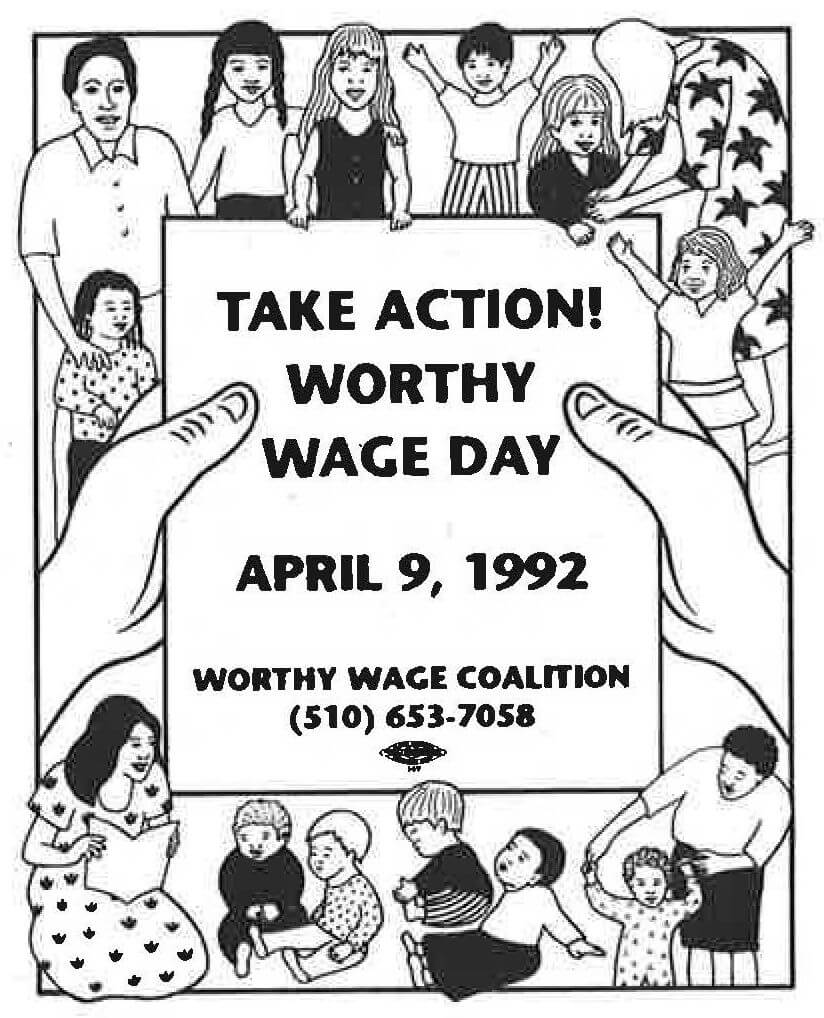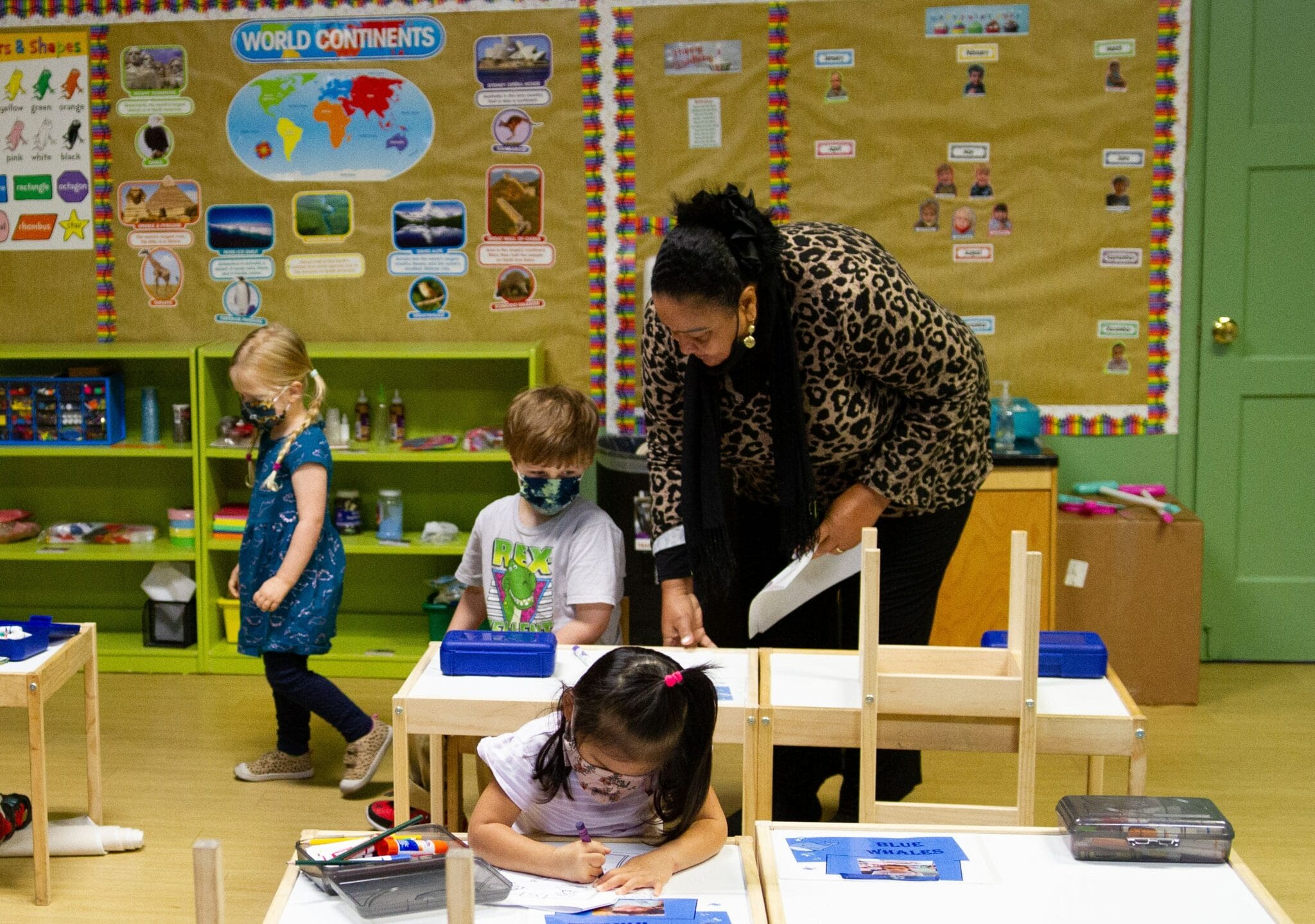Who were the Worthy Wagers?
Where did they come from?
Maybe your mother or grandmother was one.
Worthy Wagers know stories of how a movement began.
Don’t you wish you could be one? Well, maybe you can!
We adapted these lyrics from a song that might be familiar to you in the hopes that they will make you wonder about the Worthy Wagers.
We were among them, just three of many formidable women (and a few men) from all around our country, fighting for economic justice for the early childhood workforce. In the spring of 1992, we established a “Worthy Wage Day” as a day of community action. More than 120 organizations in 30 states participated, holding teach-ins, rallies, and other events. We even made it on to CBS Nightly News.
Over time, May 1 became our annual day of celebration and activism. It put the Worthy Wage Campaign, our movement for Rights, Raises, and Respect, in the spotlight through collective actions designed to amplify our voices and provide visibility to a largely invisible workforce.
There are still Worthy Wagers in our midst. Some are working with children today; others are working on their behalf. Some, like us, are actually now grandmas. Some are young activists and emerging leaders trying to right a wrong and may not even know yet that they, too, are Worthy Wagers.
May 1 is Worthy Wage Day, so take it from a few of the wise elders: our history is an important reminder that early educators inherit a tradition rooted in activism. We created a teacher-led movement and taught ourselves skills that our professional preparation did not, like how to be organizers, public speakers, and influencers of public policy. We engaged in LEAP (the Leadership Empowerment Action Project), a program that we designed to help us see ourselves as leaders for change, capable of taking action and spreading the news to others. During our multi-year campaign of the 1990s, we discovered leadership within ourselves, and saw the beginnings of the changes we imagined. Here are how some participants experienced a LEAP gathering in 2002:
“LEAP has opened awareness for action in my community. I felt isolated and found others who felt the same… LEAP helped me become aware that I was not powerless and that I could be part of influencing change.”
Terri Roston, Child Care Teacher, Denver
“It doesn’t matter if we come from a center or family provider home. It’s especially good to keep family providers uplifted because most of the places we go, we are forgotten. Here, we get the strength to leap forward and develop strategies, knowing that future ‘leapers’ will always have past ‘leapers’ to support and help them in all their endeavors, passions, goals, whatever they are trying to succeed in.”
Verna Aggie, FCC Provider, Philadelphia
The struggle for better wages and working conditions in our field continues. Throughout the COVID-19 pandemic, early childhood educators experienced even greater hardship, yet children and families witnessed their resilience, tenacity, and an abundance of creativity. Seizing this moment in history, child care teachers and family child care providers have the potential to once again center themselves in a new, more equitable and better-informed movement. Consider the lessons from the past and remember the “Worthy Wagers.” Wouldn’t you like to be one?

History of the Worthy Wage Campaign
The Worthy Wage Campaign was a nationally coordinated effort to disrupt the status quo of low wages, poor working conditions, and the lack of public respect for and recognition of the work of caring for our nation’s young children. The decade of 1991–2001 was one of public demonstrations and protests, media campaigns, political engagement, and heightened community organizing. The outstanding feature of the campaign was that it was “teacher-led.” Those working directly with young children (primarily women who were child care teachers and family child care providers) both developed the principles that guided the campaign and designed and implemented its activities. To this end, that decade was a time of intentional learning and leadership development.
The organizational home for the Worthy Wage Campaign was originally the California-based Child Care Employee Project (CCEP), which briefly became known as the National Center for the Early Childhood Workforce (NCECW) when it moved to Washington, D.C., in 1994, and then, the Center for the Child Care Workforce (CCW). Within this structure, there was a Worthy Wage Executive Council comprised of local leaders from around the country, as well as teachers and providers seated on the Board of Directors.
The Worthy Wage Campaign would not, and could not, have happened without the work that began in the late 1970s up until the inception of the campaign in 1991. The campaign was, in fact, the culmination of a movement for worthy wages that was inspired by and also emulated other movements of the day that called for social and economic justice, like the anti-war, civil rights, anti-poverty, and women’s movements. Like all movements, there was a spontaneity in how it grew out of small efforts in local communities that became larger ones, creating momentum for ever-larger impacts. And like other movements, lives were transformed because the movement itself was driven by the power of the people most intimately impacted by the problems and most invested in finding solutions.
Worthy Wage Day, an annual spring event, became a national focal point of the campaign. At its peak, 35 states documented local and/or statewide activities on Worthy Wage Day. Over the course of the campaign, 45 states organized Worthy Wage activities, with more than one-half holding events in more than one city each year. While there is no longer an organized, national Worthy Wage Campaign, many communities continue to acknowledge Worthy Wage Day on May 1 every year.


